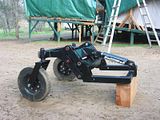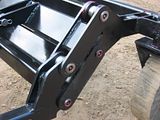bbirder
Bronze Member
Can any of you tell me the orientation of the shaft that spins around above the tailwheel on your brushcutter. I think it should be straight up and down or perpendicular to the ground to operate correctly. Mine is leaning forward I guess about 20 degrees and I have always had problems with it not spinning and just plowing ground. I really believe that I was sold the cutter with the wrong mounting bracket on it. Any thoughts?



